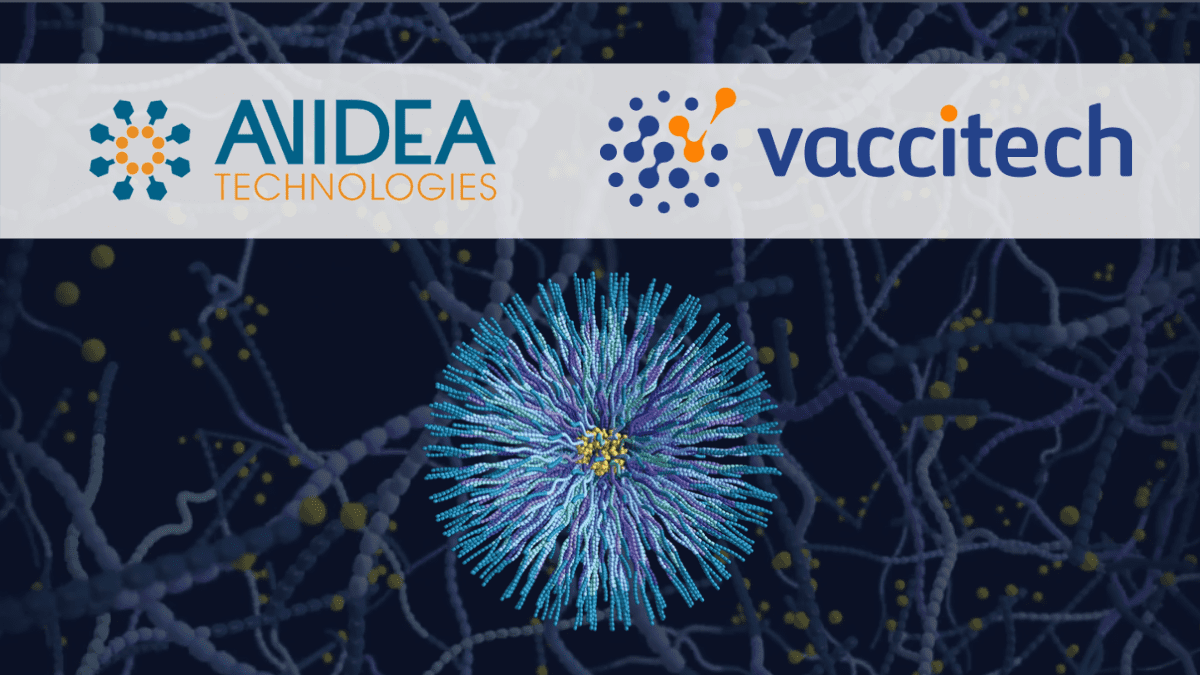
Avidea Merger with Vaccitech Provides New Opportunities for SNAPvax Platform
Did you know that Vaccitech is hiring? Check out their open Chemist and Senior Chemist positions through our Workforce Genetics job platform!
One month after being acquired in a $40 million deal by U.K.-based Vaccitech plc, the team that was formerly part of Avidea Technologies continues to advance its SNAPvax platform into the crucible of clinical trials in about one year.
Privately-held Avidea is developing next-generation T cell immunotherapies for the treatment of cancer and autoimmune diseases. The company’s immunotherapies are driven by its polymer-drug conjugate technology platform, SNAPvax, which is designed to co-deliver multiple antigens and immunomodulators in nanoparticles of precise, programmable size and composition. This is done so in order to enable the development of immunotherapy product candidates with tighter control over immune responses. The SNAPvax platform is designed to induce high magnitude cytotoxic T cells for treating cancer and chronic infections. It can also be configured to induce regulatory T cells for treating autoimmunity and allergies.
Andrew Ishizuka, Avidea’s Chief Scientific Officer and a company founder, explained to BioBuzz that the capabilities of Avidea’s SNAPvax platform provides what he called a “plug-and-play approach” that allows it to control both the type and specificity of a desired immune response.
The company has been using the platform to develop a vaccine for treating advanced cancers, and that program is expected to continue under the umbrella of Vaccitech. Ishizuka said the SNAPvax platform is complementary to Vaccitech’s own ChAdOx technology. In its announcement regarding the acquisition, Vaccitech said the SNAPvax platform will expand its pool of target antigens that can be used to bolster the company’s heterologous prime-boost vaccines.
Vaccitech said a different configuration of SNAPvax gives it the ability to create antigen-specific regulatory CD4+ T cells. Ishizuka says this highlights the plug-and-play flexibility of the technology. By targeting antigens implicated in autoimmune diseases, the company plans to pursue therapies for these diseases, broadening the range of therapeutic areas the company can ultimately pursue.
With the merger, Ishizuka said the companies will have the ability to mix ChAdOx and SNAPvax in “prime-boost combinations.” The combination of technology platforms could create new advantages in developing safe and efficacious therapeutics.
The merger will significantly benefit the former Avidea as the company had a number of preclinical and early-stage assets. Vaccitech has the infrastructure in place to run the development side of things, Ishizuka said. Avidea’s product candidates have been rigorously assessed in in vivo proof of concept studies and are within approximately one year of potential filings of Investigational New Drug applications.
With the new products that Avidea is bringing to the table, Ishizuka said there is a need to expand. In particular, he said there are expected to be expansions on the laboratory front.
Ishizuka said company leadership is already undertaking a hard look at the development of programs using the SNAPvax technology. Although he was unable to disclose the scope of the programs that are being examined, Ishizuka said the priority will be placed on the SNAPvax cancer vaccine. The company already has a significant amount of preclinical data on that program, he said.
Ishizuka said the merger between the trans-Atlantic companies has its roots in the Biohealth Capital Region. In early 2021, Avidea’s leadership team set out with plans to raise funds in another financing round. During this time, Ishizuka said his team struck up a conversation with Bill Enright, Chief Executive Officer of Vaccitech and talk turned toward a possible merger.
“An acquisition made the most sense for our team and technology,” Ishizuka said and added that the merger is a “true synergistic move for the technology, the shareholders, and the team.”
When that conversation occurred, Vaccitech was fresh off the infusion of nearly $300 million from the combination of a $168 million Series B financing round and a $110.5 million initial public offering. Ishizuka said that Enright, who lives in the BHCR, has previously consulted with Avidea, so he was familiar with the company’s approach. There had already been discussions around the combination of SNAPvax and Vaccitech’s ChAdOx vector platform. Ishizuka said that was part of the motivation behind the merger.
Under terms of the deal, Vaccitech paid $40 million for Avidea, which was comprised of $12.5 million in cash and $27.5 million in Vaccitech American Depository Shares. Avidea shareholders could also receive additional compensation based on potential milestone payments associated with research and development goals.






